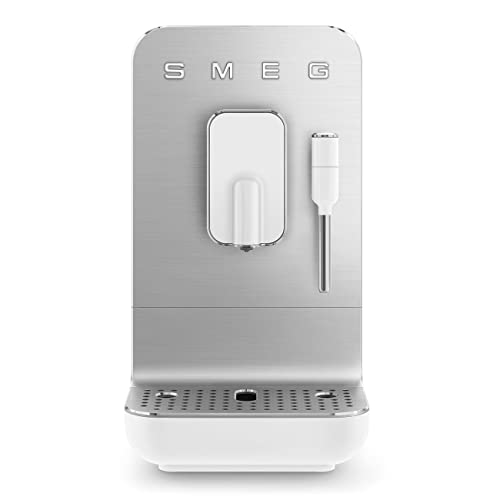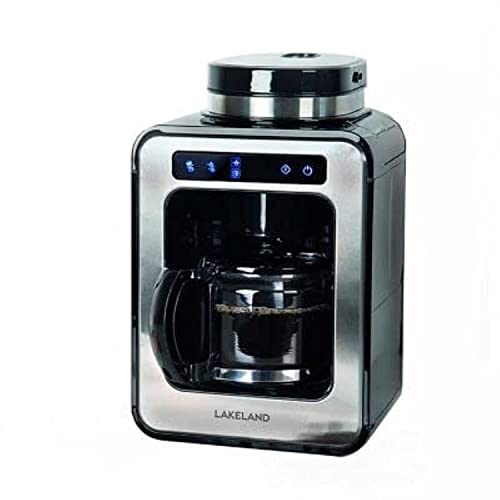Beans to Cup Coffee Machine
 Offering convenience, quality and versatility, bean to cup machines are perfect for those who prefer milk-based coffee bean to cup machines styles like cappuccinos, lattes, or flat whites. They can cut down on the amount of coffee bought and improve staff satisfaction and productivity.
Offering convenience, quality and versatility, bean to cup machines are perfect for those who prefer milk-based coffee bean to cup machines styles like cappuccinos, lattes, or flat whites. They can cut down on the amount of coffee bought and improve staff satisfaction and productivity.
These commercial coffee machines have been completely automated. Customers can select and enjoy their favorite drink by pressing a button. They still require regular cleaning and descaling to ensure they are running at their best.
The grinder
The coffee grinder is a piece equipment used to grind whole beans into ground coffee that can be brewed. Modern bean-to-cup machines come with a built-in grinder, which can reduce time and effort, not to mention the hassle of preparing the beans prior to making the coffee. The grinder could be a blade or burr type. The majority of them offer different grind settings to suit different methods of brewing. The art of choosing the right grind setting can be a daunting task. Too coarse a grinding can result in a bitter cup while too fine a grinding may not extract the full flavour.
The primary reason to use grinders is that you can enjoy a more flavourful, fresher brew. Coffee that is ground and brewed prior to brewing loses a lot of its natural flavor and aroma because of the oils in the beans to cup coffee machines being exposed to oxygen. Many coffee lovers swear by freshly ground beans for a great cup.
Some people are also concerned that coffee beans that have been ground prior to purchase have a higher chance of becoming old. This can dull the taste and increase bitterness. This is why a majority of people opt to purchase an electric grinder for their coffee maker rather than purchasing pre-ground coffee bags.
It’s possible to make use of a food processor to grind your own beans, but their motors aren’t made to work with tough ingredients such as coffee beans, and they’re not able to create consistent grind sizes. You can also use a mortar-and-pestle. The process of grinding is quite lengthy and you may end up over-grinding some beans. This could affect the quality and consistency of your brew.
Automated grinders come with an hopper you can fill with the appropriate amount of beans needed for your brew, and then work at the touch of a button or two. Some grinders come with a visual indicator that shows when the bin must be emptied. It’s important not to leave the ground coffee in the machine for longer than you need.
The brewing unit
The unit that brews coffee is in charge of compacting the ground coffee into a ball through which water can pass. The resulting cup of coffee then gets dispensing from the coffee dispenser. The unit for brewing is an intricate piece of machinery that ensures the best results every time you use it. It is essential to keep the brewing unit free of any debris or problems. Fortunately, most bean to cup offers-to-cup machines come with a built-in water filter that makes cleaning the brewing unit easier than ever.
The majority of coffee machines can make different kinds of beverages, including lattes, cappuccinos and many more variations. These features allow you to modify your drink according to your preferences and taste preferences. Some are equipped with touchscreens that allows for instant changes. These options can help you save time and money.
To prevent the brewing unit from causing jamming, the invention is an assembly of valves that is inserted between the chamber for brewing and the beverage outlet. The valve assembly is movable by the force of a spring between a first position, where the valve body member is unable to close the seat, but leaves a minimal gap, and a second position that sees the valve body member completely seals the seat. This mechanism can be used in automatic coffee machines for home and office use, as well as in food-service sites or so called HoReCa (Hotel-Restaurant-Cafe) sites or in public areas.
When the brewing unit is in stand-by mode and the second piston 6, coupled to the first piston 5, remains separated from the surfaces of the delivery outlet and the valve assembly 13 isn’t subjected to adhesion of hard residues to the surface of the delivery outlet. The coffee beverages that exit the brewing unit also provide cleaning of the surfaces of the delivery outlet and of the valve body from soft residues.
During the preparation process, the second piston 6 is moved back to its initial position by means of the extended resilient elements and in this position a dose of coffee powder is dropped into the brewing chamber. The moveable wall at the end of the first piston can be placed against the coffee within the chamber of brewing.
The water system
Bean-to cup machines are perfect for those who appreciate a good cup of coffee but don’t want to deal with grinding and tapping. They use hot water to brew espresso, creating a rich, dark cup of coffee. Some models come with a milk dispenser, so you can add foamed or steamed milk, if you wish. This can be either manual or automatic, depending on the model you select.
One of the greatest advantages of a machine that is bean-to-cup is that they use fresh whole beans, which are grinded right before making coffee. This preserves the flavor and produces a more delicious cup of coffee. This is distinct from other automated machines that make use of pre-ground beans which lose flavour and go to stale quicker after only being ground.
The water system of the bean to cup coffee machines with milk frother-to-cup machine comprises the heating unit, a tank and pump. The tank is where you store the water used for making coffee, and it’s crucial to keep this tank clean and full of fresh water for optimal results. The heating unit is in charge of getting the water to the proper temperature for brewing while the pump is responsible for maintaining the pressure throughout the process. Certain bean-to-cup machines have a built-in filter to help prevent scale buildup. This keeps the coffee tasting fresh.
The control panel controls the entire process and settings of a bean to cup machine. This is where you can set the strength, sweetness, or the amount of milk your coffee should contain, and the type of brew you’re looking for. Many models even offer customizable options that make it easier and quicker for you to enjoy your favorite coffee every time.
It is more environmentally friendly because it does not require paper filters or plastic cups. Additionally, bean to cup coffee-to-cup machines are a worthy investment for businesses, eliminating the need for unnecessary coffee purchases, and ensuring that staff and customers can enjoy excellent-quality coffee at the push of the button.
The control panel
A bean-to-cup coffee machine is an appliance that simplifies brewing a cup of delicious fresh, freshly brewed coffee. These machines combine grinding and brewing into one unit, and provide an array of options that can be customized for each drink. They ensure that the full aroma and taste is retained by grinding the whole beans just prior to brewing. In addition these machines can provide many beverage options and features, including adjustable settings for the size of the grind and the temperature of the water.
Bean-to-cup coffee machines are available at a variety of prices, ranging from budget-friendly models to high-end options designed for commercial use. Whatever the price each coffee maker has some key components that must work together to produce a quality cup of coffee. Knowing these essential components can help customers make an informed choice when it comes to selecting a coffee maker for their office or home.
The control panel is a vital element of any coffee machine and controls how it functions. It is where you select the type of coffee you want to brew and alter the strength of your beverage. Many coffee makers come with touchscreens or digital displays that make it simple to navigate the options. The higher-end coffee machines may have programmable recipes that allow you to personalize your experience to a greater extent.
Another feature that is important to the control panel is the brewing indicator. This will tell you how the brewing process is progressing and if the machine has to reset. It will also tell you whether there is a problem in the machine, like an empty water tank or the absence of beans.
 The control panel is at the center of your bean-to-cup machine. It provides a variety of features. Basic machines have simple manual controls. More advanced models include the ability to program recipes, smartphone app integration and many other features. Some bean-to-cup coffee machines come with an automatic milk texturizing system to make a professional quality cappuccino or latté. Other models provide a variety of different coffee strengths such as medium, mild or strong. Some also feature an reusable filter that eliminates the need for coffee filters that are disposable.
The control panel is at the center of your bean-to-cup machine. It provides a variety of features. Basic machines have simple manual controls. More advanced models include the ability to program recipes, smartphone app integration and many other features. Some bean-to-cup coffee machines come with an automatic milk texturizing system to make a professional quality cappuccino or latté. Other models provide a variety of different coffee strengths such as medium, mild or strong. Some also feature an reusable filter that eliminates the need for coffee filters that are disposable.
